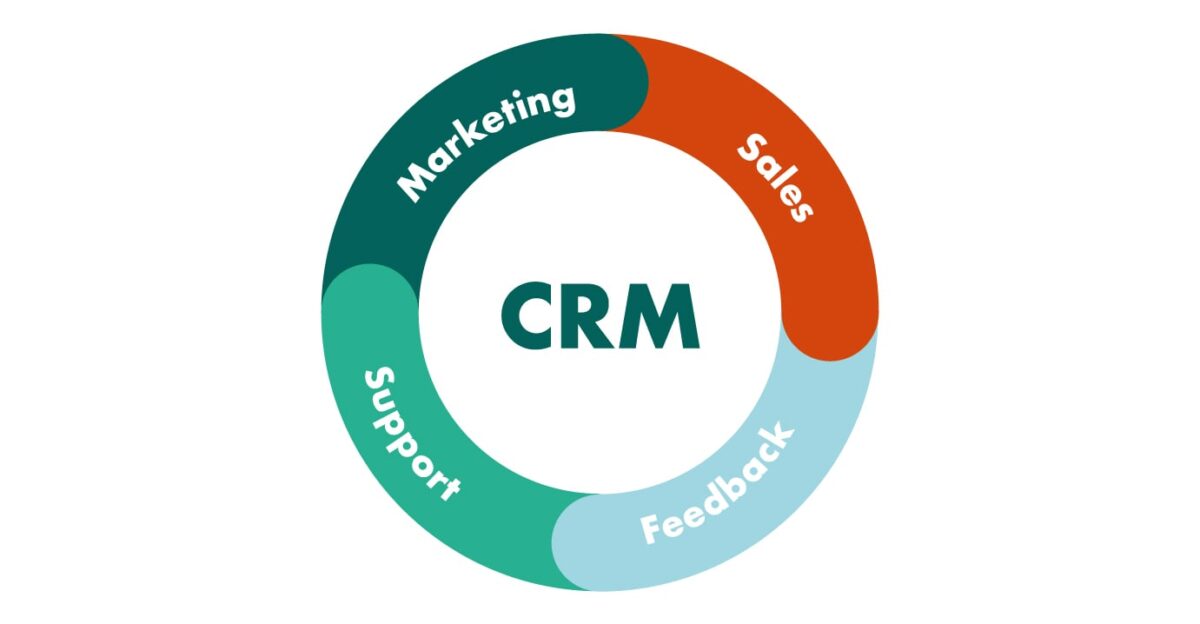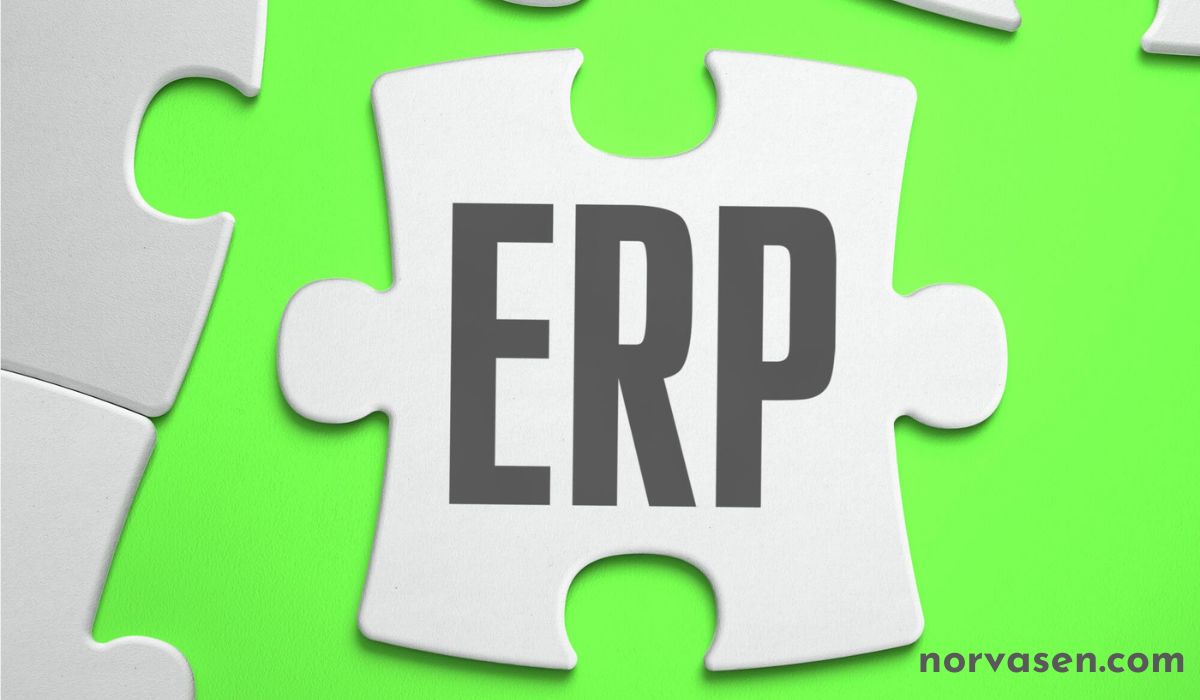Business
Enhancing Public Sector Efficiency: The Role of Customer Relationship Management Systems
Enhancing Public Sector Efficiency: The Role of Customer Relationship Management Systems

Table of Contents
- Understanding Customer Relationship Management in the Public Sector
- The Importance of Data Management in Government Services
- Strategies to Improve Citizen Engagement
- Security and Privacy in Public Sector CRM
- Reviewing the Impact of CRM on Service Delivery
- Tailoring CRM Systems to Different Government Agencies
- Innovations and Future Trends in Government CRM
- Training and Workforce Development for CRM Adoption
- Effective Collaboration and Integration with CRM Solutions
Understanding Customer Relationship Management in the Public Sector
The adoption of CRM for local government signifies a pivotal shift in the approach to citizen services. Unlike the profitability-oriented CRM systems of the private sector, CRM for the government focuses on quantifying and improving the citizen’s experience. This involves deploying a toolset that captures interactions across various channels, from face-to-face counter services to digital communication platforms. With CRM systems, government agencies become better equipped to serve citizens by understanding their inquiries, resolving their issues efficiently, and keeping track of their satisfaction levels. All these efforts contribute towards a more transparent and responsive government structure, encouraging public trust and engagement.
The Importance of Data Management in Government Services
Integral to governmental CRM systems is the sophisticated management and analysis of data. Real-time data collation ensures that governments have their fingers on the community’s pulse, ready to respond to changing needs and expectations. As insights on Forbes indicate, informed decision-making steered by thorough data analysis can radically enhance public service outcomes. However, it is not only about the assemblage of data but also about breaking down silos and sharing insights across different municipal departments to present a unified response to various citizen requirements.
Strategies to Improve Citizen Engagement
Citizen engagement remains a cornerstone of effective governance. With CRM systems, governments can revolutionize how they interact with citizens, ushering in a new era of personalized, tailored communication. CRM leverages multiple touchpoints – whether through social media, email, or community outreach – ensuring a consistent and personalized experience. Moreover, CRM tools foster an ethos of transparency, enabling governments to keep constituents informed and involved in decision-making processes, thereby nurturing a digitally empowered and participatory public sector.
Security and Privacy in Public Sector CRM
Data security and citizen privacy are critical concerns in governmental CRM use. Public agencies must ensure their CRM systems comply with rigorous security standards and privacy laws to protect sensitive personal data. This means implementing state-of-the-art security measures like encryption, secure access controls, and regular security audits. It also involves communicating privacy policies to citizens, reinforcing trust, and demonstrating the government’s commitment to protecting personal information.
Reviewing the Impact of CRM on Service Delivery
The deployment of CRM systems within government agencies has manifested a positive shift in service delivery. These systems have redefined how services are offered, setting new benchmarks for efficiency and responsiveness. The impact is multifold – from shortening queues and wait times to improving the accuracy and relevance of the services provided. CRM also enables governments to reach out to citizens proactively, identify community needs early, and tailor their services based on sophisticated analytics, thereby enhancing overall citizen satisfaction and the perceived quality of public administration.
Tailoring CRM Systems to Different Government Agencies
Diverse governmental institutions necessitate CRM systems that are versatile and adaptable to specific operational needs. Tailoring a CRM goes beyond superficial customizations; it involves profound modifications considering an agency’s unique workflow, regulatory commitments, and citizen interactions. This bespoke approach ensures that technology complements public sector operations’ intricacies, leading to better adoption rates and more successful CRM outcomes. It helps institutions focus on citizen-centric strategies while optimizing internal processes and enhancing operational agility.
Innovations and Future Trends in Government CRM
Emerging innovations are continuously shaping the evolution of CRM systems. Predictive analytics, AI-driven insights, and automation are leading the charge, transforming CRM tools into even more effective instruments for civic management. While these innovations bring infinite possibilities for enhanced citizen services, keeping pace with such rapid technological advancements requires government agencies to prioritize technological agility and continuous learning. Future CRM solutions will likely go beyond traditional data management, embracing the Internet of Things (IoT), blockchain, and other cutting-edge technologies that could further streamline government-citizen interactions.
Training and Workforce Development for CRM Adoption
Sustaining the success of a CRM initiative rests on the shoulders of a fully trained and technologically proficient workforce. Continuous education and empowerment of public sector employees are fundamental for maximizing the capabilities of CRM systems. Effective training programs, compromising technical skills, and a clear understanding of procedural changes enable staff to utilize CRM methodology to its fullest potential. Furthermore, staff across all levels need to comprehend the strategic vision behind the adoption of CRM, ensuring that they are operationally adept and advocating for a new, improved approach to public service delivery.
Effective Collaboration and Integration with CRM Solutions
A seamlessly integrated CRM system is the keystone to achieving collaborative efficiency across various government departments and sectors. Successful CRM implementations often involve the creation of an interconnected ecosystem that enables real-time data sharing and processing. Such an integrated approach is heralded in a McKinsey report, which suggests that the digital transformation of government services extends far beyond single-department improvements and into comprehensive, cross-functional collaboration. CRM solutions foster a culture of openness and cooperation that is conducive to achieving a more agile and responsive government when effectively integrated.
Business
Trusted Commercial Fence Contractors for Your Property Needs

Securing your property means investing in quality fencing solutions. This is especially true in today’s competitive market.
Working with trusted commercial fence contractors is essential. This is whether you’re a business owner looking to enhance security or a property manager seeking aesthetic improvements.
This blog post will guide you through the process of finding reliable contractors. We’ll help you make the most informed choice for your property needs.
So, read on to learn more!
Do Your Research
Before choosing a commercial fence contractor, it’s crucial to do your research. This means looking into their experience, expertise, and past projects.
One way to start is by checking the company’s website. Here, you can find information on their services, client testimonials, and photos of previous work.
You can also check online review websites such as Yelp or Google My Business for ratings and reviews from other customers. This will provide insight into the contractor’s reputation and level of customer satisfaction.
Ask for Referrals
Word-of-mouth recommendations are another valuable resource when searching for reliable commercial fence contractors. Ask colleagues or business partners if they have worked with any reputable contractors in the past.
You can also reach out to other property owners or managers in your area for recommendations. This will not only help you find trusted contractors. It will also give you insight into pricing and project timelines.
Consider Credentials
When choosing a commercial fence contractor, it’s essential to consider their credentials. Make sure they are licensed, insured, and have all the necessary permits required for fencing projects in your area.
A reputable contractor should also be willing to provide references from previous clients and proof of completed projects similar to yours. This will give you peace of mind knowing that you’re working with qualified professionals. Whether you are up for roll-up garage doors or simply revamping your property’s fence, proper credentials are essential.
Get Multiple Quotes
It’s always a good idea to get multiple quotes from different commercial fence contractors before making a decision. This will not only give you an idea of the market price. It will also help you compare services and project timelines.
Be wary of extremely low quotes; they may be a red flag for subpar materials or workmanship. Remember, quality fencing solutions require proper investment. Whether you are going for clear garage doors or security fencing, always prioritize quality and reliability.
Communication is Key
When working with commercial fence contractors, communication is key. Make sure to communicate your expectations and ask any questions you may have regarding the project.
A reputable contractor should be transparent about their:
- process
- costs
- any potential delays or issues
This will ensure that both parties are on the same page throughout the entire process.
Hire the Right Commercial Fence Contractors
Securing your property with quality fencing solutions is essential to protect your business and enhance its appearance. Working with trusted commercial fence contractors is a crucial step in this process.
Investing in the right commercial fence contractor can provide long-term benefits for your property. So take the time to find the best fit for your needs and watch as your property’s security and aesthetics improve.
Should you wish to explore more reads, head to our blog page. We’ve got more!
Business
Streamlining Your Business with ERP Software to Optimize Efficiency

Streamlining your business can help you work better and faster. ERP software is a useful tool that helps companies manage their daily tasks in one place. By using this software, you can save time and reduce mistakes, making your business more efficient.
ERP stands for Enterprise Resource Planning, and it is a type of software that integrates multiple business processes into one system.
In this blog, we will explore how to streamline your business with ERP software to optimize efficiency.
Centralized Data Management
Centralized data management is key to running a successful business. By keeping all data in one place, employees can easily access information. This leads to faster decisions and fewer mistakes.
When companies use centralized systems, they can track everything better. This helps in sharing data across teams. As a result, optimized business operations become possible, boosting overall productivity and efficiency.
Automate Routine Tasks
Automating routine tasks is essential for saving time and reducing errors. With ERP software, businesses can set up processes to run automatically, like billing and reporting. This means employees have more time for important work that needs creativity.
Automated tasks help businesses run smoothly. When repetitive jobs are done by the software, mistakes go down. This leads to better efficiency and is a key part of ERP optimization that every company should consider.
Improve Inventory Management
Good inventory management is very important for any business. ERP software helps track inventory levels in real-time. This means you always know what you have in stock.
With better inventory management, you can avoid overstocking items. You can also make sure you do not run out of popular products. This leads to streamlined business processes and happier customers, as they can get what they need without delay.
Enhance Financial Reporting
An ERP system feature allows businesses to improve their financial reporting. It helps collect all financial data in one place. This means reports are more accurate and faster to create.
Better financial reporting helps businesses understand their money. Companies can see their profits and expenses clearly. This helps them make smart choices about spending and saving.
Foster Better Collaboration
Fostering better collaboration is key to a successful business. ERP software makes it easy for teams to share information. This helps everyone stay on the same page and work together smoothly.
With strong teamwork, projects get done faster. Using NetSuite optimization services can help improve communication. Better collaboration leads to satisfied employees and customers.
Streamline Supply Chain Operations
Streamlining supply chain operations is important for every business. ERP software helps manage all parts of the supply chain in one system. This means you can track orders, shipments, and suppliers easily.
When the supply chain runs well, businesses save time and money. With clear information, companies can spot problems early. Happy customers get their products on time, which helps grow the business.
Wrapping Up: Key Steps to Optimize Efficiency
Using ERP software is a smart choice. It helps businesses manage tasks better and find new ways to optimize efficiency. By focusing on centralization, automation, and better collaboration, you can enhance your operations.
Effective inventory management and financial reporting lead to clearer insights. These insights help in making good business decisions. When teams work together, everyone benefits.
By streamlining supply chain operations, you can improve service for your customers.
Did this article help you? If so, take a look at some of our other blog posts for more informative reads.
Business
Best Poshmark Sharing Bot vs. Manual Sharing

Introduction
Sharing items on Poshmark is a vital activity for sellers to increase the visibility of their listings and drive sales. Sellers have two main options: using a Poshmark sharing bot or manually sharing their listings. In this post, we’ll compare these two methods to help you decide which is best for your Poshmark business.
What is a Poshmark Sharing Bot?
A Poshmark sharing bot is a software application designed to automate the process of sharing items in your Poshmark closet. These bots can perform a variety of tasks, such as sharing your listings, following other users, and sharing items to Poshmark parties. They work by simulating the actions you would normally perform manually, thus saving you time and effort.
Manual Sharing on Poshmark
Manual sharing involves personally handling all the tasks required to maintain an active Poshmark presence. This includes sharing your items multiple times a day, following new users, and participating in Poshmark parties. While manual sharing gives you full control over the process, it can be incredibly time-consuming and tiring.
Pros and Cons of Using a Sharing Bot
Advantages:
- Time-Saving: Sharing bots handle repetitive tasks, freeing up your time for other important activities.
- Consistent Activity: Bots can share your items at regular intervals, ensuring your closet remains active and visible.
- Increased Engagement: By automating interactions, sharing bots can help you gain more followers and potential buyers.
Potential Drawbacks:
- Cost: While many sharing bots offer free trials, premium features often come with a subscription fee.
- Risk of Account Suspension: Poshmark’s terms of service discourage automation. Using bots can potentially lead to account suspension if detected.
Pros and Cons of Manual Sharing
Advantages:
- Full Control: Manual sharing allows you to personally manage all interactions, ensuring a personalized touch.
- Compliance: There is no risk of violating Poshmark’s terms of service, as you are performing all tasks manually.
Potential Drawbacks:
- Time-Consuming: Sharing items manually multiple times a day can be very time-consuming.
- Physical Strain: The repetitive nature of manual sharing can lead to physical strain, especially if you have a large closet.
Conclusion
Both sharing bots and manual sharing have their advantages and disadvantages. If you’re looking to save time and maintain a consistent presence on Poshmark, a sharing bot might be the right choice for you. However, if you prefer full control and want to avoid any potential risks, manual sharing is a safer option. Ultimately, the best choice depends on your individual needs and preferences.
For more information on automating your Poshmark closet and boosting your sales, explore the features offered by this Poshmark automation tool.
-

 Tech5 months ago
Tech5 months agoExploring the Features of Innocams: The Future of Security
-

 Home Improvement3 months ago
Home Improvement3 months agoEco-Friendly Round Rug Options for Sustainable Living in NZ
-

 How-To Guides2 months ago
How-To Guides2 months agoComprehensive Guide to Cockwarming: Enhancing Intimacy and Connection
-

 Fashion3 months ago
Fashion3 months agoBlack Magic: The Elegance and Sophistication of Ultimate Homecoming Dresses in Black
-

 Apps and Games3 months ago
Apps and Games3 months agoDiscover Tickzoo: The Ultimate Platform for Video Content Lovers and Creators
-

 Business5 months ago
Business5 months agoUnlock Potential: Explore Pikruos Services
-

 Blog3 weeks ago
Blog3 weeks agoPossiblyethereal: Exploring the Ethereal Unveiling Abstract Ideas
-

 Entertainment4 months ago
Entertainment4 months agoDiving into the Audio-Visual Experience with AV Tub: Innovating Our World of Media




























